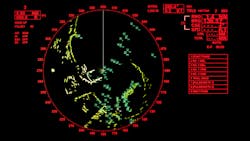How Software-Defined Radio is Advancing Radar Systems (Download)
Radar (or radio detection and ranging) systems are precise and versatile RF instruments that have become indispensable for many industries, playing a significant role in shaping the modern world. From military operations to air traffic control, these systems are now the main tools for monitoring and tracking objects in motion. Naturally, development of novel radar techniques and devices requires significant resources.
However, complex techniques involving multiple channels and anti-jamming waveforms can’t be easily performed using traditional RF transceivers. They lack the flexibility and programmability to address dynamic tasks and adapt to different scenarios.
Software-defined radios (SDRs), on the other hand, are digital-based radio transceivers with high levels of versatility, scalability, and adaptability. Thus, they’re able to address the changing needs of the industry while also allowing for the implementation of extremely complex and powerful measurement schemes—e.g., beamforming and frequency hopping—that require very low-latency computation of multiple RF channels.
